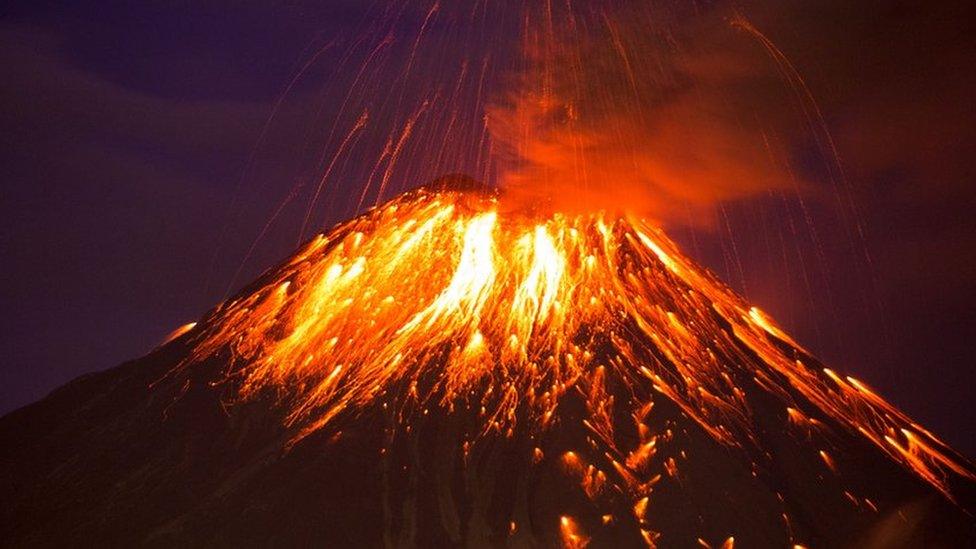White Island volcano: How are bodies being recovered?
- Published
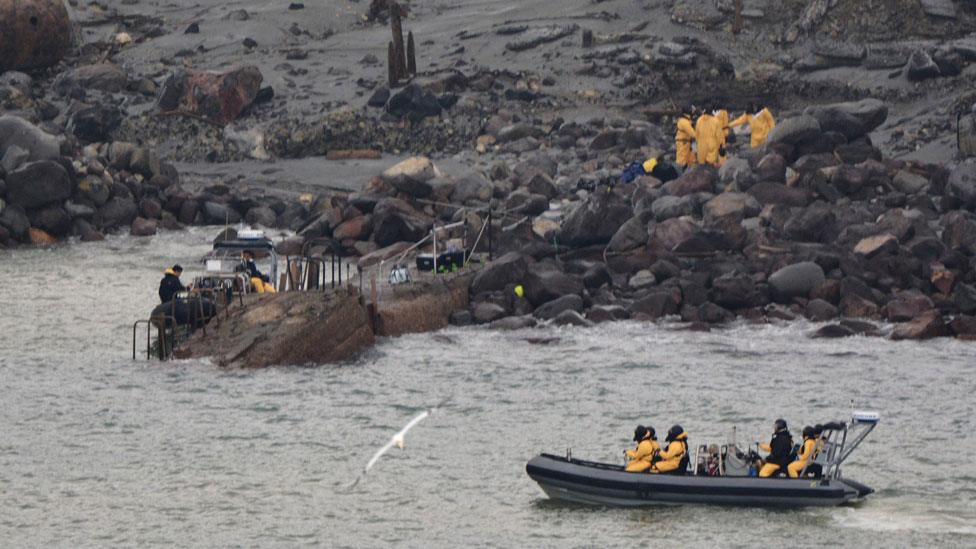
Specialist members of New Zealand's military have retrieved the bodies of six victims caught in the eruption of the White Island volcano.
Authorities launched the "high-speed" operation on Friday morning - succeeding in finding six of the remaining eight bodies. The hunt for the final two will continue on Saturday, police said.
Eight people have so far been confirmed dead and many more injured after the volcano exploded on Monday, sending scalding steam, ash and rock into the air.
What did the mission involve?
Members of the New Zealand Defence Force were flown on two military helicopters from nearby Whakatane airport at first light on Friday and spent four hours on the island retrieving the bodies.
Earlier surveillance flights had allowed the authorities to locate six of them.


The recovery team, made up of six bomb disposal specialists and a commanding officer, were kitted out with protective clothing - each wearing a yellow full-body "hazmat suit" and gas masks.
Poisonous gases are still billowing from the volcano and the island - also known by its Maori name of Whakaari - is blanketed in acidic ash.
"The environment that those staff encountered was unpredictable, challenging and those staff showed absolute courage in order to ensure that those six people were returned to their loved ones," said Police Commissioner Mike Bush.
Working in pairs, the team brought the bodies to a central location before a waiting helicopter flew them to the nearby navy frigate HMNZS Wellington.
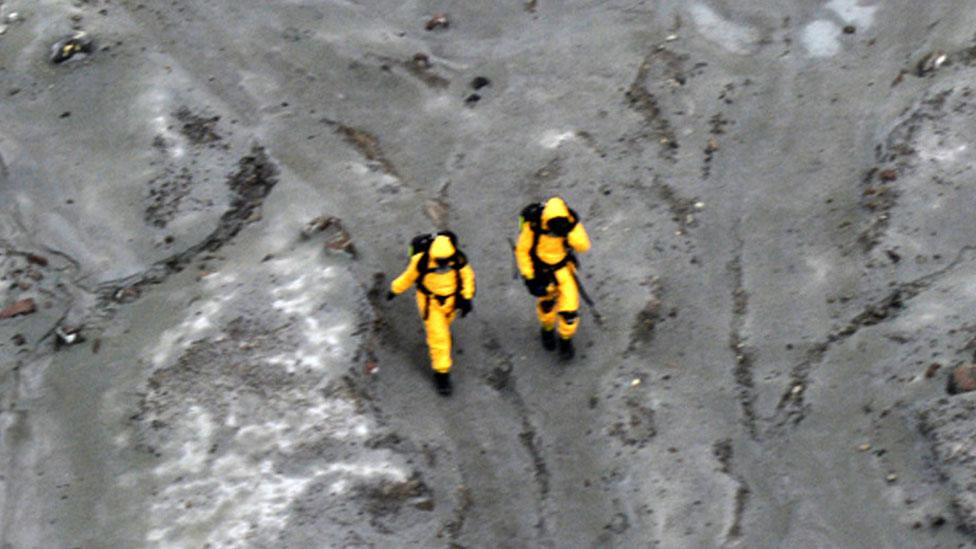
"Unfortunately the recovery option is not over as two people remain unaccounted for," Mr Bush said.
The operation - a collaboration between the New Zealand Defence Force, police, scientists and others - was extremely dangerous and involved intensive planning and risk assessment.
Police, army medics and officials were monitoring the mission from a boat stationed just off the island. Geologists also analysed real-time data to assess whether another eruption was imminent.
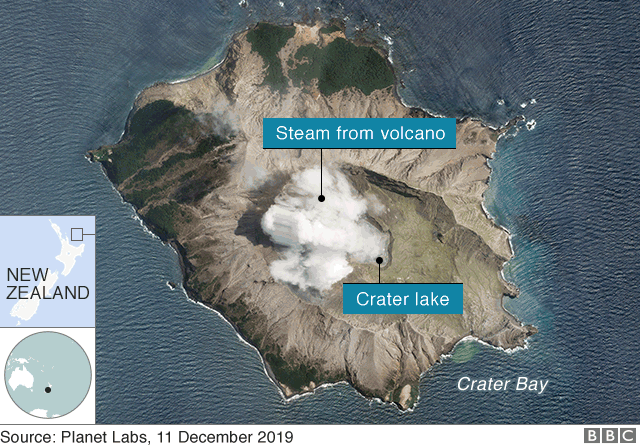

The recovered bodies will be flown to Auckland, where forensic experts will try to identify them.
New Zealand police said recovery teams would return to the island to resume the search for the last two bodies.
"We are making every effort to locate and recover the two remaining deceased," Mr Bush said.

What happened?
On Monday 9 December at about 14:11 local time (01:11 GMT), the volcano on White Island erupted with two explosions in quick succession, flinging ash 12,000ft (3,658m) into the air.
Some 47 people, mostly tourists, were on or near the island when the volcano blew. They came from New Zealand, Australia, China, Germany, Malaysia, the UK and the US.
Moments before it erupted, people - circled below - were seen walking close to its active vent.


Some survivors were rescued by boat in the immediate aftermath of the explosion, but police said it was too dangerous to mount a rescue operation at the time.
Later, helicopter missions launched by local commercial pilots picked up 12 more people - many with severe injuries and burns. They were flown back to the nearby town of Whakatane for medical treatment.

How dangerous is White Island?
Whakaari, located 30 miles (48km) off New Zealand's North Island, is home to New Zealand's most active cone volcano.
The uninhabited island is a popular destination for day tours and scenic flights, despite having regular eruptions.
New Zealand sits on the Pacific "ring of fire" - the most seismically and volcanically active zone in the world.
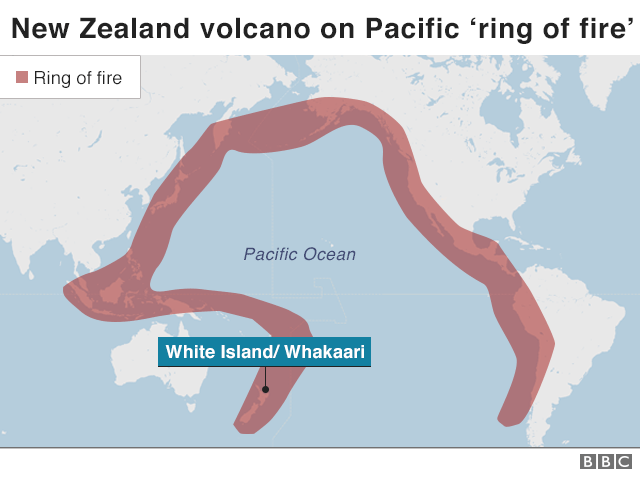
Most of the White Island volcano is below water, with only a 2km-wide portion of the top visible above sea level.
It has seen several eruptions over the years, most recently in 2016, but no-one was hurt.
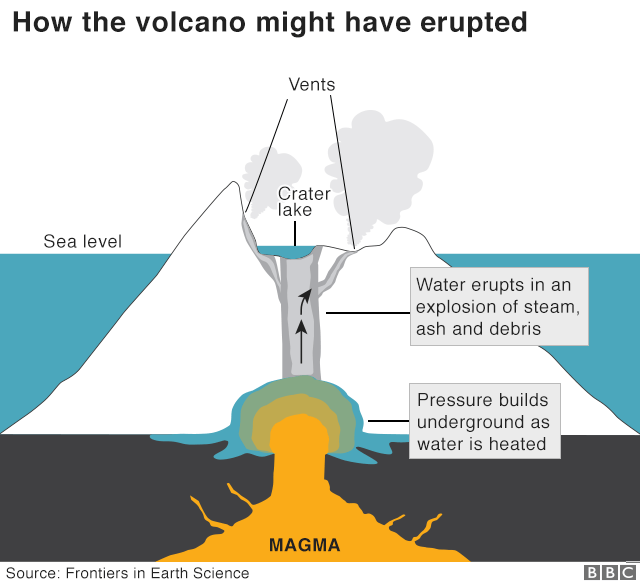

Although it can be notoriously difficult to know when an explosion might happen, there were warning signs in the weeks prior to the eruption. Last month, the alert level was raised to two, indicating moderate to heightened volcanic unrest.
However, the sudden and dramatic nature of the eruption took people by surprise.
New Zealand police have launched an investigation into the circumstances of the deaths.
- Published17 December 2019
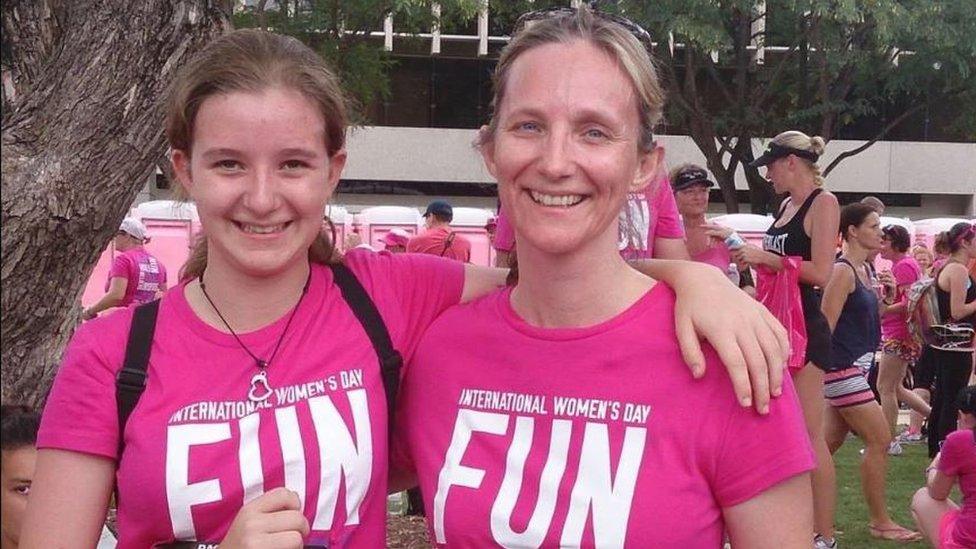
- Published10 December 2019
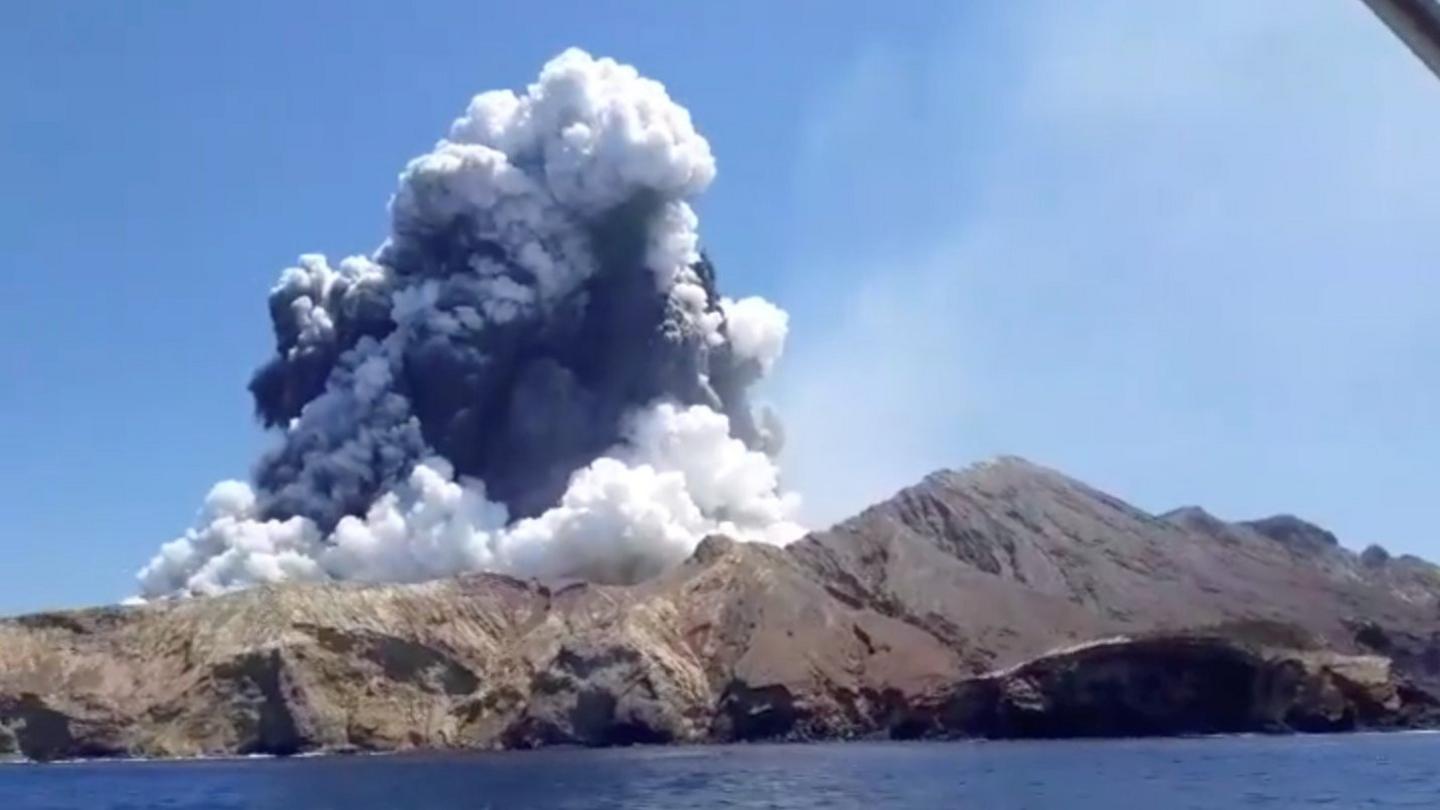
- Published13 January 2020
